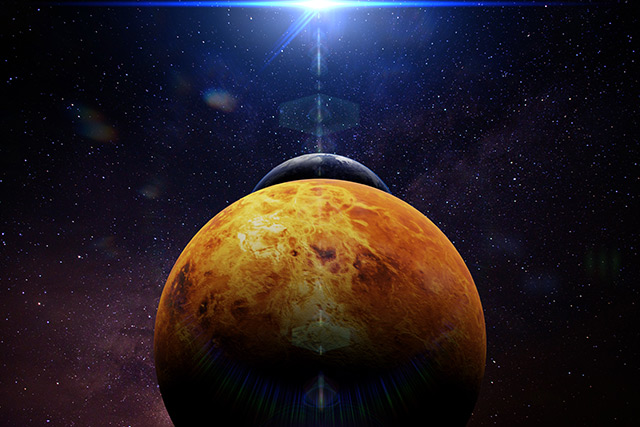Giant asteroid on collision course with Earth could NOT be stopped by a nuclear bomb, NASA simulation shows
05/05/2021 / By Virgilio Marin

An asteroid simulation exercise led by the National Aeronautics and Space Administration (NASA) has shown that our existing technology cannot take down a killer asteroid discovered six months before it hits the Earth.
Indeed, the exercise suggests that even a nuclear bomb isn’t enough to break the asteroid apart because the rock is too big. It also shows that preparing a spacecraft to smash into the asteroid is not feasible given the small amount of time remaining before the collision.
What happens in the months leading up to an asteroid impact
NASA conducted the simulation exercise, called “Space Mission Options for the Hypothetical Asteroid Impact Scenario,” from April 26 through April 29 in collaboration with the Federal Emergency Management Agency. For the four-day drill, American and European scientists were given a simulated six-month timeline to hatch a plan to stop a fictitious rock on a collision course with Earth.
Details of the scenario – such as the probability of impact and where and when the impact might occur – were given to the participants piece by piece over the course of four days to simulate how a real situation might play out.
On its first day, the exercise started its timeline on April 19 where an asteroid that could hit the Earth was “discovered.” The asteroid, named 2021PDC, it was placed 35 million miles away and given an estimated five percent probability of hitting the planet on Oct. 20.
But next day, when the timeline was fast-forwarded to May, the participants found that the space rock actually had a 100 percent probability of impacting the Earth. Its predicted impact zones were in Europe or northern Africa.
The participants then started planning various missions to send a spacecraft to destroy the asteroid or deflect it off its path. But the team concluded that they wouldn’t be able to launch the mission given the short timeframe and limitations in technology.
They even proposed nuking the asteroid to break it apart. Computer models showed that a nuclear bomb could reduce the space rock to a less destructive size. But the simulation’s stipulation that the asteroid could be anywhere from 114 feet to half a mile in size meant that there was little certainty a nuke could even make a dent on the asteroid. (Related: Not as easy as in the movies: Scientists say blowing up asteroids that threaten life on Earth will be extremely difficult.)
On day three, the exercise jumped to when the world was preparing for the collision. Data taken during the past few months showed that the asteroid’s expected impact location would somewhere around Germany, the Czech Republic, Austria, Slovenia and Croatia.
On day four, there was only less than a week before the impact. With the space rock only 3.9 million miles from the planet, astronomers were able to determine that the asteroid was much smaller than previously thought. It had a 99 percent probability of landing near the border of Germany, the Czech Republic and Austria. By the time it arrived, it would explode and generate as much energy as a nuclear bomb. Meanwhile, all that could be done was to evacuate residents of the affected regions.
Timeline of exercise was longer than most real-world scenarios
While the exercise gave the scientists several months to prepare, in reality, astronomers often detect incoming asteroids merely days or even minutes before impact. Such was the case of the Chelyabinsk meteor.
Known as the most destructive asteroid to hit Earth in recent times, the 56-foot-wide meteor exploded without warning above the city of Chelyabinsk in Russia in February 2013. The explosion was 30 to 40 times stronger than the nuclear bombing of Hiroshima in 1945 and generated shockwaves that shattered windows and injured thousands.
But destructive as it was, the meteor was spotted only when it entered the atmosphere, at which point it was only a matter of minutes before it exploded. (Related: Astronomers detect closest asteroid to fly by the Earth six hours too late.)
In the years since the Chelyabinsk event, space agencies like NASA had ramped up efforts to protect the planet from a catastrophic asteroid impact. One such effort was conducting a simulation exercise.
“Each time we participate in an exercise of this nature, we learn more about who the key players are in a disaster event, and who needs to know what information,” NASA’s planetary defense officer Lindley Johnson said after the latest simulation activity.
“These exercises ultimately help the planetary defense community communicate with each other and with our governments to ensure we are all coordinated should a potential impact threat be identified in the future,” Johnson went on.
Disaster.news has more about asteroid impacts and other cosmic disasters that affect life on Earth.
Sources include:
Tagged Under: Asteroid, asteroid impact, astronomy, Chelyabinsk meteor, cosmic, disaster, NASA, nuclear bomb, nukes, outer space, planet Earth, planetary defense, simulation exercise, Space
RECENT NEWS & ARTICLES
COPYRIGHT © 2017 SPACE.COM
All content posted on this site is protected under Free Speech. Space.com is not responsible for content written by contributing authors. The information on this site is provided for educational and entertainment purposes only. It is not intended as a substitute for professional advice of any kind. Space.com assumes no responsibility for the use or misuse of this material. All trademarks, registered trademarks and service marks mentioned on this site are the property of their respective owners.





















